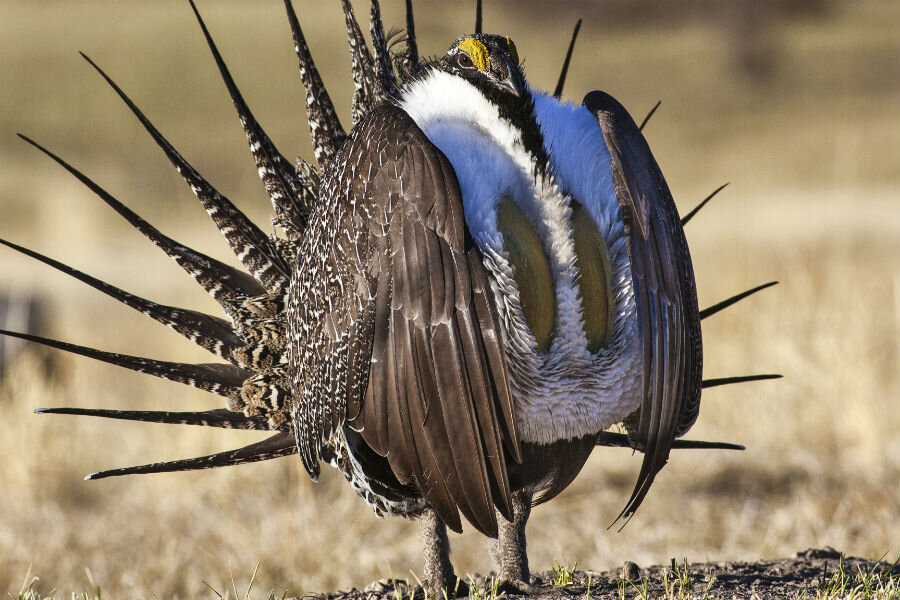As biodiversity dwindles, a shift in thought on conservation
Loading...
The sage grouse is an unlikely lightning rod for public policy reform, but the eccentric-looking bird now finds itself at the center of a debate over the future of conservation of endangered wildlife in the United States.
The decision last month by the US Department of the Interior not to list the sage grouse on the endangered species list and instead to put forth a kind of collaborative plan for the species' survival may mark a turning point in the country's approach to conservation.
The Obama Administration and the 10 US states the grouse calls home had already committed hundreds of millions of dollars to saving the bird without the Endangered Species Act designation; industry stakeholders in oil, gas, and agriculture say that adding the grouse to the list would impede economic development.
In all, there are 14 individual plans tailored specifically to different regions that have been identified as essential habitats for the grouses’ continued survival. The government plans include methods to minimize disturbances in those varied zones – from restricting energy development to reducing wildfire threats and invasive species. Critics of the Department of the Interior plan say it is too much of a patchwork.
The decades-long approach to species conservation in the US has focused on saving individually threatened flora and fauna in specific locations, with a vision of restoring as much land as possible back to nature. Conservation efforts rarely coincide with the interests of modern life.
Rather than see private landowners, who control the vast majority of the land where endangered species live, as enemies, many conservationists are coming around to the idea that it makes more sense to enlist them as partners, convincing them that conservation is in their interests, The New York Times reports.
In this new approach, people are treated as part of the American landscape instead of apart from it. The Endangered Species Act, passed in 1973 under the Nixon Administration, appears to be ready for an overhaul. In fact, a recent survey by Morning Consult found that 63 percent of Americans support modernizing the ESA.
“It’s not about setting aside places for wild species anymore,” said Frank Davis, the director of the National Center for Ecological Analysis and Synthesis at the University of California, Santa Barbara in an interview with The Times. “It’s about figuring ways to coexist with them in a highly uncertain future.”
Bob Stallman, president of the American Farm Bureau – a group that has been reported to side with "Big-Agra" over family farms – said in a statement:
The intent of the Endangered Species Act is inspiring, but results have been less so. Farmers, ranchers and environmentalists agree that we must save wildlife facing preventable extinction, but the current recovery rate of less than 2 percent shows the law is a failure.
Today, many landowners hesitate to establish habitat that would help endangered species. That’s so because the law itself makes it impractical for them to use their land once they have made the effort to help in the first place. The ESA can and must be modernized to protect endangered species and respect private property rights.
The Times reports that by the end of this century, as many as 10 billion humans are projected to be competing with other species for available space, with climate change already forcing species to move into new habitats, and migrations only expected to increase over time.
Some environmentalists will now argue that in order for conservation to truly succeed, it must work on a macro-scale, with more than a single species as its focus. Instead, they say, looking at entire ecosystems, as well as acknowledging the benefits that nature provides to humans, could be the path to conservation.






